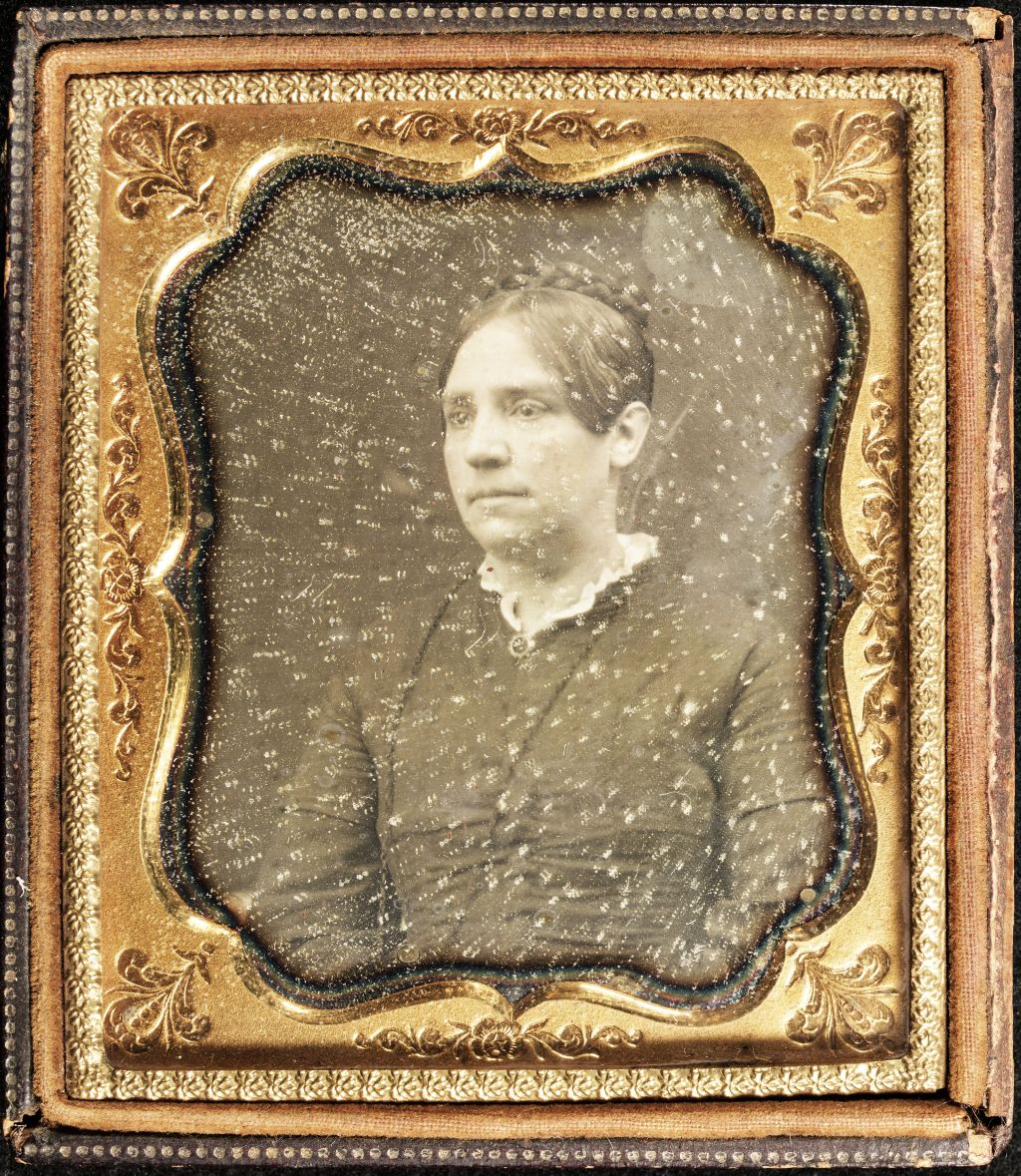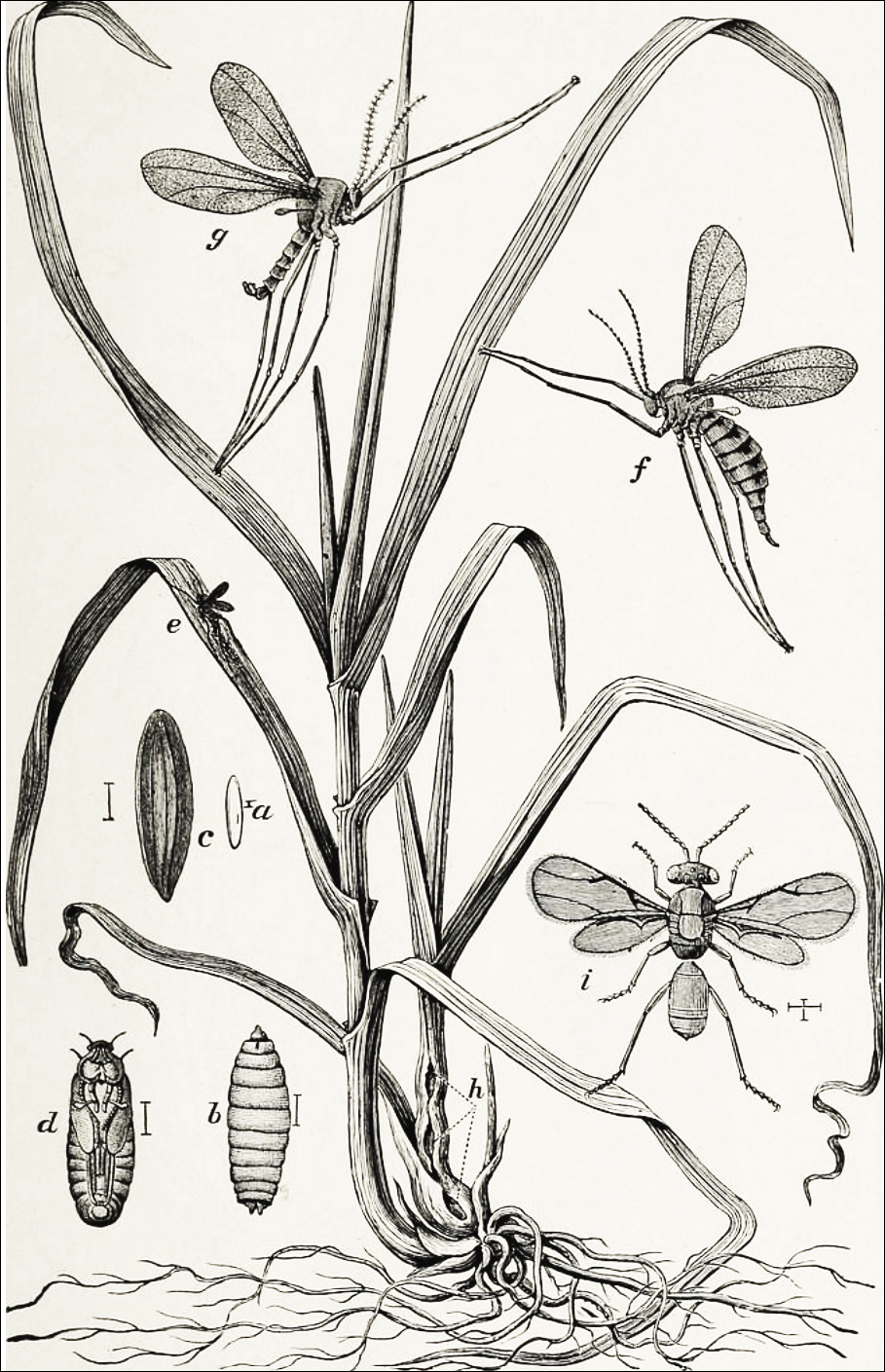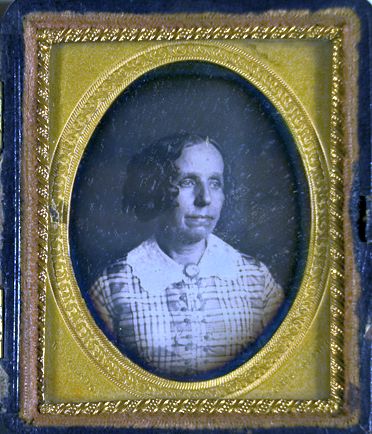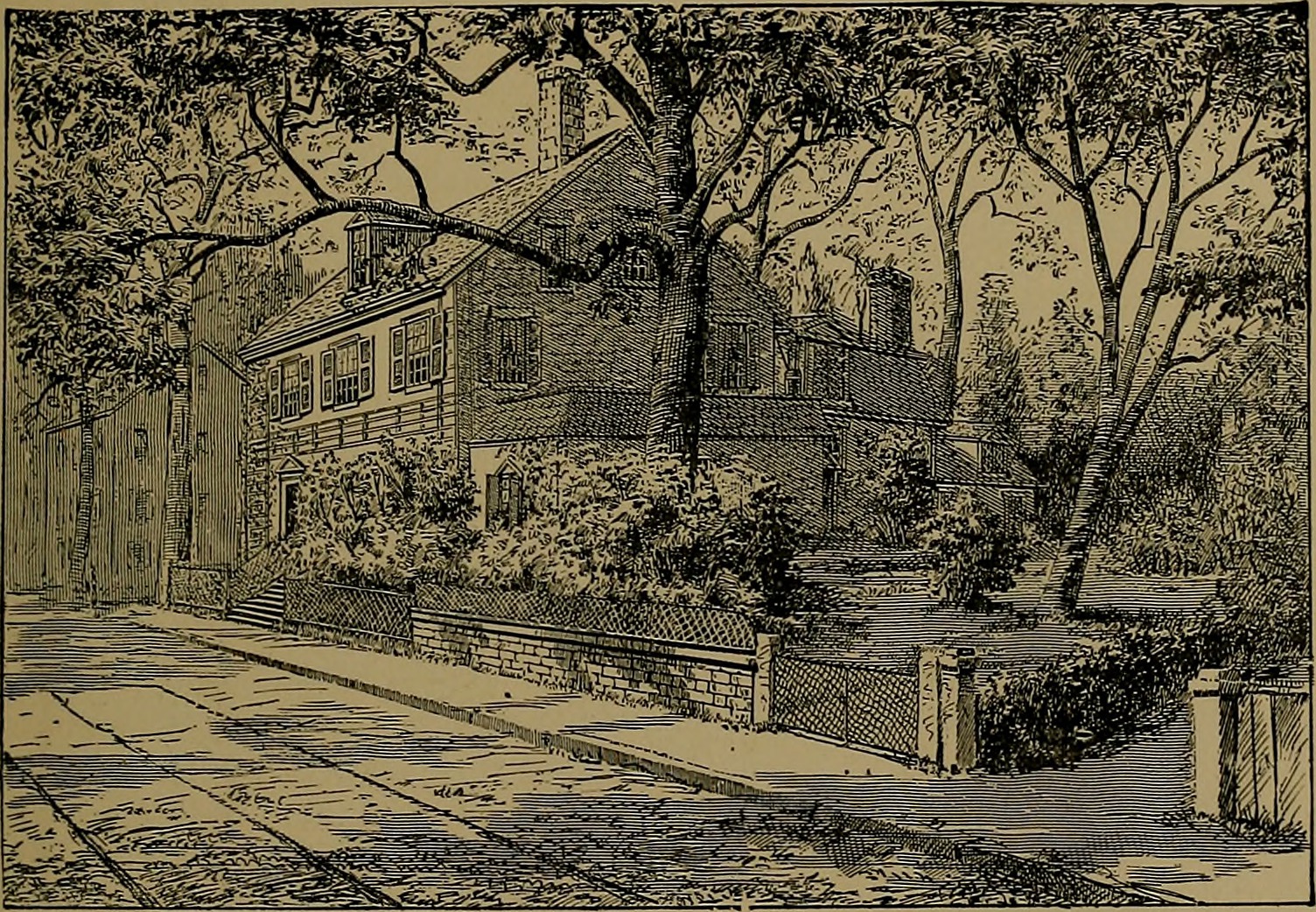Two gifted sisters in Philadelphia helped to transform early American science.
-
Winter 2024
Volume69Issue1

Editor's Note: Catherine McNeur is an associate professor of history at Portland State University and is the author of Taming Manhattan and Mischievous Creatures: The Forgotten Sisters Who Transformed Early American Science, in which portions of the following essay appear.
Shifting and hoisting her skirts to make her way through the narrow rows of wheat with her net, knife, magnifying glass, and containers, the entomologist Margaretta Hare Morris was on a mission. Her neighbors’ field showed signs of a fly infestation. “Prompted by no other motive than a love of study,” she recalled later, “this, to me, new insect was an object of peculiar interest.” She wanted to observe the fly with her own eyes, to study its behavior, to collect specimens, and, most importantly, to devise a strategy to stop its spread.
Cutting off sections of infested wheat with her knife, she carried the awkward bundle home to place it under bell jars in the library that she and her sister, the botanist Elizabeth Carrington Morris, had created on their third floor. She hoped to watch the flies mature and transform. As she was fond of saying, “an evil investigated and understood is half-remedied.”
American women have been scientists since before the sciences were even an established profession, though that history has largely been forgotten. Though the nineteenth-century Philadelphia sisters, Margaretta and Elizabeth Morris, would come to win acclaim for their discoveries, they faced an uphill battle to be taken seriously by their male peers.
Later in her career, Margaretta would be one of the first women elected to American Association for the Advancement of Science, and she and Elizabeth were in conversation with Charles Darwin, Asa Gray, Louis Agassiz, and other major scientists who benefited from their discoveries. The path to that hard-won recognition began with those tiny wheat flies.
Margaretta realized that something was amiss in the summer of 1836 when she noticed that her neighbors’ field was not the only one suffering. Newspapers and a few agricultural journals were beginning to report on how Hessian fly larvae were gorging themselves on young wheat plants. Margaretta noted that the fly was appearing around Philadelphia in “appalling numbers” that had not been seen for a generation. The Hessian fly, or Cecidomyia destructor, was capable of devastating wheat yields, creating cascading consequences for farmers and consumers alike in a culture that was so dependent on flour and bread.

At the front lines in the fight to stave off the pests were American farmers, who had been disagreeing about the behavior of these flies and the best methods for protecting their crops for decades. In a primarily rural country, farmers spanned social classes and political parties. They filled pages of local newspapers with descriptions of infestations and tips on how to handle the problem: planting wheat after certain dates or planting certain kinds of wheat, burning stubble, and even seeking out and destroying the countless eggs by hand. Some overwhelmed farmers admitted that nothing they did seemed to help.
Agricultural journals — which supplied farmers with the latest information to support their work — provided a forum to debate how the wheat fly behaved and how they might be able to get a handle on the problem.
These journals had recently begun to publish articles by a few entomologists who specialized in such pests. Some farmers appreciated this, while others balked at the prospect of men, who often lived in cities and were not farmers themselves, presuming to instruct them in ways that countered their own experience and observations.
While some embraced “book farming,” as it was often called, as a way to bring scientific methods into their fields, others mocked it as an unnecessary intrusion. Emotions tended to run high in the pages of these journals when the subject of wheat flies came up, not only because people's experiences across regions differed, but because it invoked a cultural clash between academic expertise and lived experience. So much was at stake, including farmers’ livelihoods, particularly since wheat was the primary grain crop in the United States.
Today, entomologists recognize just how little they know about flies in the Cecidomyia family. Only a tiny fraction of them have been identified, described, and named — and, by some estimates, there are close to two million species of the insect worldwide. In the early nineteenth century, however, most publications on North American pests listed just three or four Cecidomyia, at best. In other words, agricultural science had not yet advanced to a point where entomologists and farmers could readily distinguish among various species of the wheat flies.

Though she had never seen one before she actually went looking for them, Margaretta had substantial knowledge about these flies. Hessian flies had devastated American wheat fields to varying degrees from the 1780s onward, flitting around the leaves, laying eggs that matured into ravenous larvae. Seemingly fragile and resembling mosquitos, these tiny flies could wreak havoc on a devastating scale.
Margaretta’s tutor, Thomas Say, had observed and described the fly’s life cycle in the very same fields that she was exploring. Say published his findings in the first volume of the Journal of the Academy of Natural Sciences in 1817, with illustrations by Charles Alexandre Lesueur, back when Margaretta and her sister were still students of theirs.
In her library, Margaretta reread Say’s description of the Hessian fly. He wrote the kind of clipped descriptions typical of entomological studies of that period. It was Say’s vague description of the fly’s behavior, though, that gave her pause.
He had begun his explanation of their life cycle with a statement that seemed to lack confidence: “The history of the changes of this insect is probably briefly this — .” That phrase — “is probably briefly” — suggested that Say had made assumptions based on a limited study. He went on to describe how the female fly deposited the eggs “between the vagina of the inner leaf and the culm nearest to the root of the plant.” And there, Margaretta noted a discrepancy. The flies she observed laid their eggs in the head of the wheat, amid the seeds — not in the groove between the leaf and the stem.
Perhaps Thomas Say had been mistaken. Or else this was not the same fly. By avoiding specifics, he had “left room for these doubts.” However, Say had died a premature death less than two years earlier, and his old friends had celebrated him as the founder of American entomology and zoology ever since. He was practically a scientific saint. Contradicting him would ruffle more than a few feathers.
As Margaretta peered into her bell jar full of larvae and wheat stalks, she was about to wade into the middle of this tumultuous landscape of active discovery and rampant contradiction. She was neither a farmer, nor a man of science, and she found it difficult to prove to either of those groups that she was qualified to speak as an expert. But that did not hold her back.
She submitted several years’ worth of findings to the American Philosophical Society and the Academy of Natural Sciences, along with specimens that had been published in articles geared toward farmers in agricultural journals. She certainly ruffled feathers along the way, and when she determined that she had discovered a previously unknown and unnamed wheat fly related to the Hessian fly, she was frustrated to find that few believed her.

No matter her training or even her close connections with other naturalists, simply being “Miss Morris” hurt her credibility and made her a target for intense criticism and even mockery. The specimens she painstakingly collected and shared were neglected until they were ruined, and knowledge of the fly she discovered — Cecidomyia culmicola (Morris) — vanished over time.
While Margaretta could have withdrawn because of the disrespect she faced, she instead honed her strategies and stepped more confidently onto the public stage with each subsequent discovery she made. As she put it, “This formidable opposition roused me to renewed exertion.” The pushback she received from critics did not silence her; it fueled her determination.

